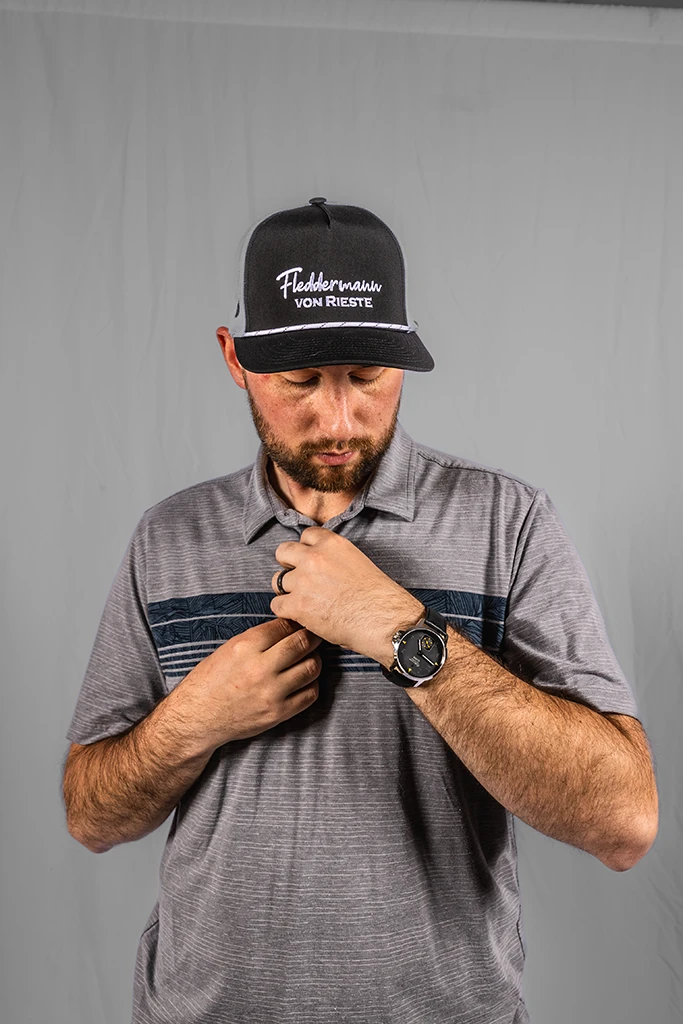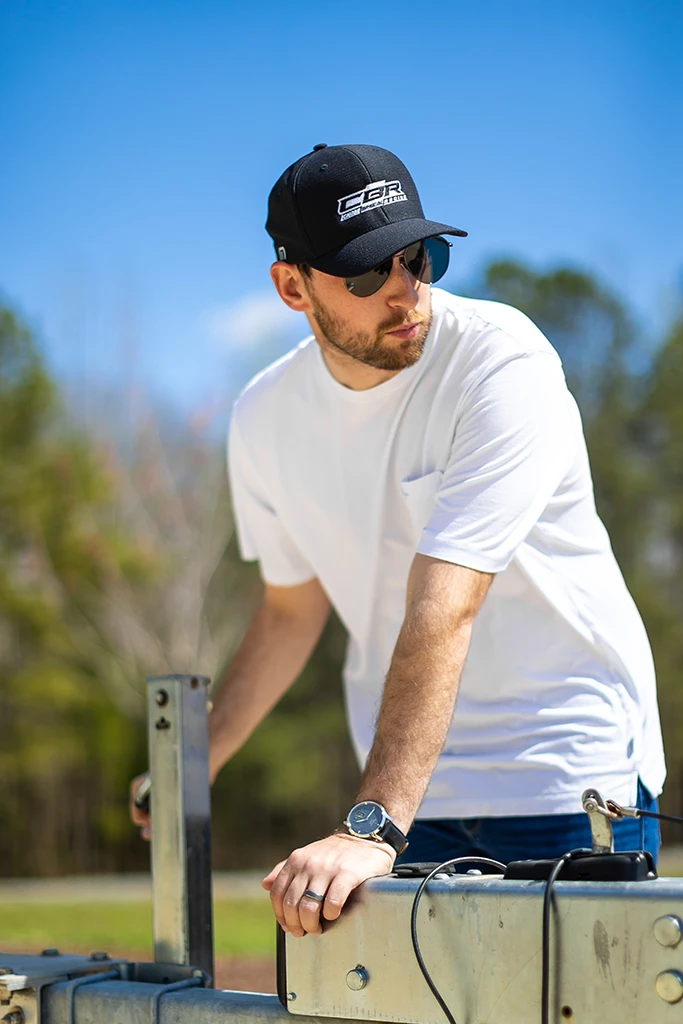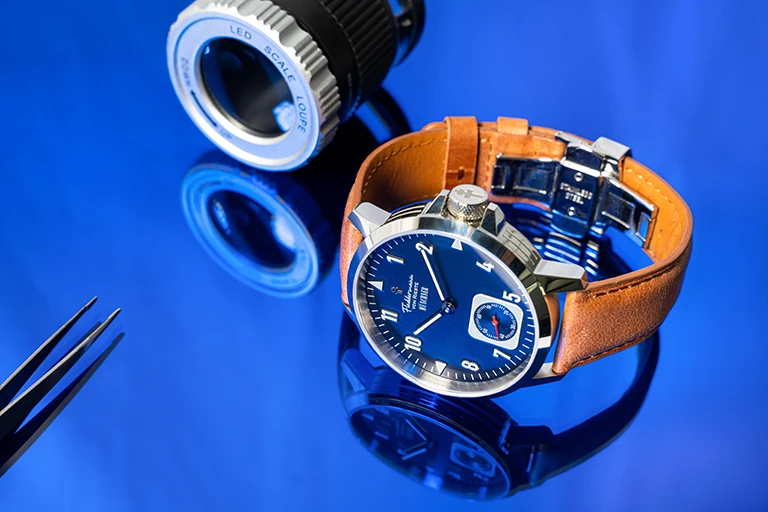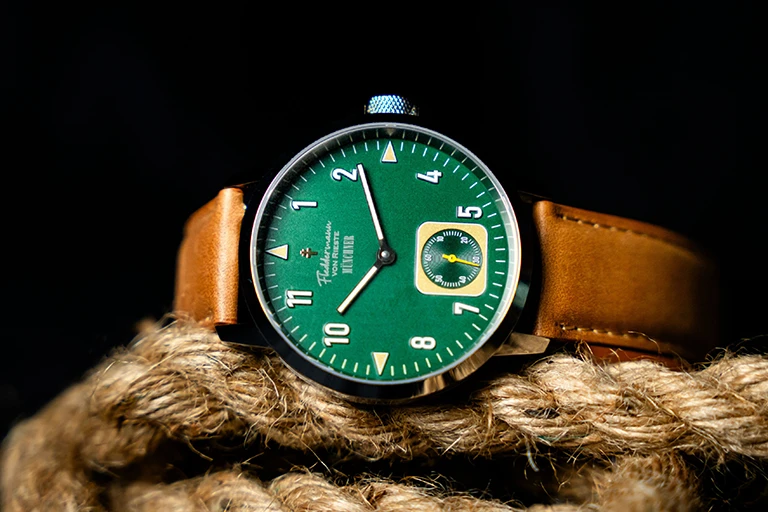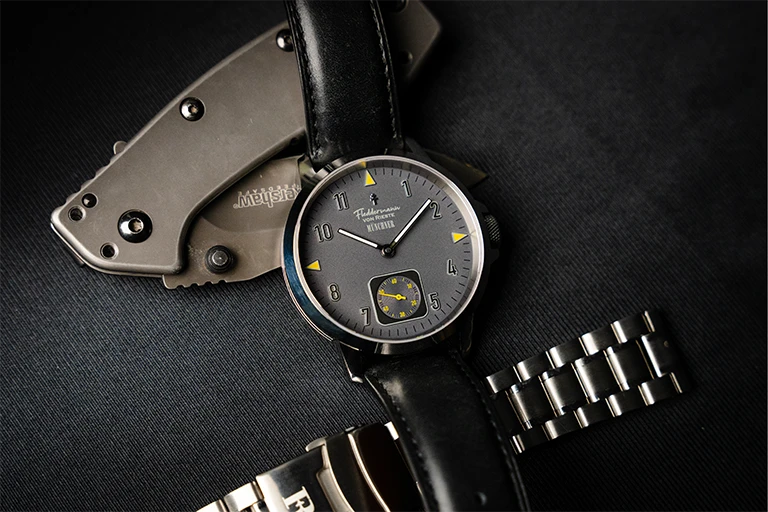Chase Briscoe Bristol Bass Pro Night Race Advance – No. 14 Rush Truck Centers Ford Dark Horse Mustang
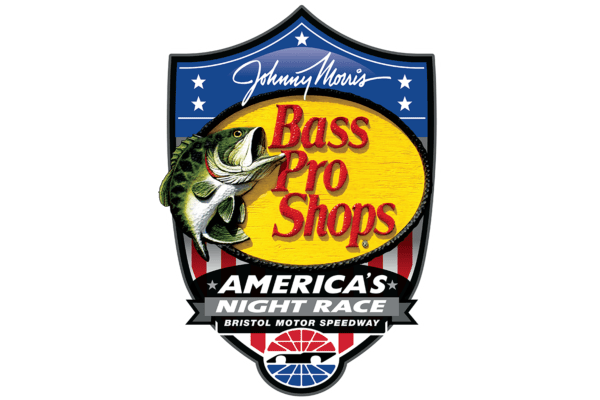
No. 14 Rush Truck Center Ford Mustang Dark Horse
● Event: Bass Pro Shops Night Race (Round 29 of 36)
● Time/Date: 7:30 p.m. EDT on Saturday, Sept. 21
● Location: Bristol (Tenn.) Motor Speedway
● Layout: .533-mile, concrete oval
● Laps/Miles: 500 laps/266.5 miles
● Stage Lengths: Stage 1: 125 laps / Stage 2: 125 laps / Final Stage: 250 laps
● TV/Radio: USA / PRN / SiriusXM NASCAR Radio
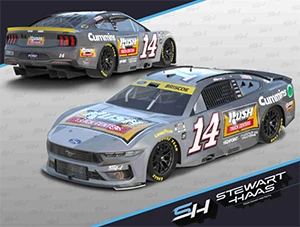
Notes of Interest
● Chase Briscoe comes into the Bass Pro Shops Night Race at Bristol (Tenn.) Motor Speedway 11th among the 16 drivers in the NASCAR Playoffs. Only the top-12 drivers in points after Bristol advance to the next playoff round, and Briscoe sits just one spot above the playoff bubble with a six-point advantage over 13th-place Denny Hamlin. Briscoe can either maintain that advantage at the end of Saturday night’s 500 lapper around the .533-mile oval or punch his ticket to the Round of 12 with a victory.
● The Bass Pro Shops Night Race will mark Briscoe’s fifth career NASCAR Cup Series start on Bristol’s concrete surface. The driver of the No. 14 Rush Truck Centers/Cummins Ford Mustang Dark Horse for Stewart-Haas Racing has two top-15 finishes, with his best effort being 13th, a result earned twice – in his first Cup Series start at Bristol in September 2021 and in his last Cup Series start at the track in March.
● Despite limited NASCAR Cup Series experience at Bristol, Briscoe has always felt comfortable at the high-banked, .533-mile oval. In fact, Bristol’s layout harkens back to two other high-banked venues Briscoe competed on as he climbed the racing ladder. Salem Speedway and Winchester Speedway, both in Indiana, provided Briscoe with a hint of what throttling around Bristol’s 28 degrees of banking would be like. Salem is a .555-mile oval with 33 degrees of banking and Winchester is a half-mile oval with 37 degrees of banking. Briscoe made three ARCA Menards Series starts at Salem and one at Winchester. In his three starts at Salem between 2015 and 2016, Briscoe won two poles (April and September 2016), led a total of 155 laps, and scored two finishes of sixth or better, with his best result being fifth in his debut at the track in 2015. In his lone ARCA race at Winchester in 2016, Briscoe dominated by winning the pole, leading the most laps (142 of 200) and winning the race by 1.132 seconds.
● In the NASCAR Xfinity Series, where Briscoe competed from 2018 through 2020 before earning his promotion to the NASCAR Cup Series, Bristol was one of Briscoe’s best tracks. He made six Xfinity Series starts at the track and, in his last four starts, Briscoe never finished worse than fourth. In fact, he capped off his Xfinity Series career at Bristol in the best way possible – with a win. Briscoe won the 2020 Food City 300 in September, vanquishing the back-to-back runner-up finishes he earned in his two prior starts at Bristol in August 2019 and June 2020.
● Briscoe competed at Bristol for the first time in 2017 when he drove a Ford F-150 for Brad Keselowski Racing in the NASCAR Craftsman Truck Series race. Briscoe acquitted himself well, qualifying 15th and finishing 12th. It remains his only Truck Series start on Bristol’s concrete.
● The 2024 season marks the 15th year of partnership between Rush Truck Centers and Stewart-Haas, and it’s a partnership that goes well beyond a design on a racecar. All Stewart-Haas racecars are transported via tractor-trailers from Rush Truck Centers, the premier service solutions provider to the commercial vehicle industry. And those tractor-trailers are supported by the RushCare Customer Support team of parts and service experts, who also provide concierge-level service for scheduling maintenance, technical support, mobile service dispatch and roadside assistance, along with help locating the nearest Rush Truck Centers dealer, and more. Rush Truck Centers is the largest network of commercial vehicle dealerships in North America with 150 locations in the United States and Ontario, Canada, and takes pride in its integrated approach to customer needs – from vehicle sales to aftermarket parts, service and body shop operations, plus financing, insurance, leasing and rental, as well as alternate fuel systems and other vehicle technologies.
● Cummins joins Rush Truck Centers for this weekend’s race at Bristol. Cummins Inc., is a global power technology leader that designs, manufactures, distributes and services a broad portfolio of power solutions. These solutions include advanced diesel, natural gas, hybrid, electric, fuel cell and other technologies. Cummins powers the future through innovations that make people’s lives better. From buses that transport kids to and from school, to the trucks that carry essentials, to construction, mining equipment, trains and ships, and critical backup power for places like data centers and hospitals, Cummins is doing it with the cleanest solutions available. Learn more at cummins.com.
Chase Briscoe, Driver of the No. 14 HighPoint.com Ford Mustang Dark Horse, wearing the Fleddermann von Rieste Munchner in Charcoal Grey featuring a Swissmovement and assembled in America, Photo Credit – Justin Potter
Briscoe Banter
How much confidence did that win in the regular-season finale at Darlington (S.C.) Raceway give you, knowing that you get it done when you need to get it done?
“A lot, and not just myself, but as a race team. We all kind of knew we could win. As a group, we’ve won before, but it had been almost two years. The pit crew guys, it was the first win for almost all of them, and they always thought they could win but, until you do it, you really don’t know. Just the confidence that comes along with winning goes a long way. Specifically, winning at Darlington, the Southern 500, it’s a crown-jewel race for us and, arguably, one of the hardest races on the entire schedule to win. So the confidence that comes along with that, knowing if we can win the Southern 500, then why can’t we win this week at Bristol? I definitely feel like our team as a whole has way more confidence. We kind of walk with more swagger. We just feel better about it. And to do it the way we did it, beating Kyle Larson, beating Kyle Busch, it’s not like we lucked into a win. We literally ran top-three from mile one to mile 500. Just all that kind of combines itself into having a lot of confidence, and I certainly feel like we have that right now.”
Do you get updates about where the other playoff drivers are during a playoff race? If so, does that impact how you drive?
“You’re definitely aware of those playoff guys, especially if some of them have trouble, just because then you can kind of balance your risk versus reward. If there are six playoff guys who are having a bad day and you’re running 12th, it’s not the worst thing in the world to finish where you’re at instead of trying to risk getting to ninth and you end up losing six or seven more spots. You’re definitely trying to balance that all out. During the regular season, you don’t really have a whole lot of that, but once the playoffs start, you’re really only racing the other 15 guys. The unique thing is that the non-playoff guys are still out there with us, but from a points standpoint, you’re just trying to race those other 15 guys and trying to take points away from them, so you base your strategy off that, you base your race off that. It’s definitely unique compared to other sports where we’re in the playoffs, but we’re still competing against people who aren’t in the playoffs.”
Bristol is an elimination race. What’s the feeling knowing four playoff drivers won’t advance?
“Going into Bristol, it’s an elimination race – and really, any elimination race, whether it’s Bristol or another round, or for us like it was at Darlington – you just know that you have to do everything perfectly. You can’t have any big mishaps, you can’t have a bad night on pit road, and you can’t make a big mistake on the racetrack. At the end of the day, you’re probably not going to win every elimination race, even if you do everything perfectly. But if you do everything perfectly that night, you can go to bed and hang your hat on the fact that you did everything you could and the points just weren’t enough. I think that’s the biggest thing going into an elimination race – not eliminating yourself and just putting together the most solid night you can from start to finish.”
What’s the intensity of a playoff race at Bristol?
“No matter if you’re a playoff driver or you’re not a playoff driver, when you go to Bristol, especially for the night race, it’s intense. Everything is electric, and there’s just a certain intensity in the air. And then you throw in the fact that it’s a cutoff race, that 16 guys are going to get whittled down to 12, there’s a different feeling in the air, a different intensity, and that’s what makes the Bristol Night Race even cooler.”
Do you consider yourself an underdog in this playoff race?
“I don’t consider ourselves to be an underdog. Some people might’ve already written us off, but for myself and our entire race team, we all feel like we can win it all. That’s probably crazy from a guy who didn’t look like he was even going to be a part of it, but the way we look at it is if we can win the Southern 500, we can win probably any race throughout the entire season. It’s probably the hardest race on the schedule to win and, for us, the big thing was that all of us thought we could win, but we didn’t know we could win. And now we know that we can win, and to do it the way we did it, the confidence and the momentum that comes with that is unique and something that I don’t think any other race team can match right now.”
Knowing you’re down to the final races with Stewart-Haas Racing, how much pride do you have to finish on a high note?
“A ton. I grew up a diehard Tony Stewart fan and just a fan of Stewart-Haas Racing. That was my favorite team growing up, so there’s a lot of pride for me that, first off, goes with just getting in the 14 car, let alone wearing that Stewart-Haas Racing badge for 320-plus employees. For us to be able to win when we did, in our final season, when we honestly had every reason to give up, and for us to keep fighting and keep going and bringing cars to the racetrack and to win, did a lot from just a company standpoint. That was the last race before the playoffs started, and if we don’t win that race, then there’s no shot for any Stewart-Haas car to win the championship. One of my guys said it best the other day, ‘If we didn’t win that race, everybody was already counting down the days to the end of the season.’ Now, they’re so excited and we’re just counting down the days to the next race. It’s changed the entire atmosphere at the shop, the morale, people are excited again, and that’s something that as a company we hadn’t had in a couple of years, so it’s pretty cool to be the guy who gets to bring that to the shop.”
Does Stewart-Haas shutting down at the end of the year provide more fuel to you and the rest of the team?
“Yeah, I think so. No other team can compare to what we’re going through, and no other team has the emotions that we do, so I think that’s what makes us so scary. We have a lot on our shoulders and there’s a lot of pride that comes along with that. We’re just a unique race team right now. And every other team in the playoffs, they’re trying to figure out how to make four cars fast in the playoffs. Hendrick’s got four cars in the playoffs, JGR has four cars in the playoffs, our place has four cars, but only one of them is in the playoffs, so all of the focus is on the 14 car, and I think that makes it a little easier for us.”
Explain how being the lone car from Stewart-Haas in the playoffs is better than being part of a four-car team with all of their drivers in the playoffs?
“There’s probably a disadvantage if you’re just a one-car team in general and you’re the only car in the playoffs, but I do think there’s a big advantage of being a four-car team and only having one car in the playoffs. Those other four-car teams have to focus on all four of their cars and bring their best to the racetrack every single week. And even on the racetrack, they’re all going to be fighting amongst each other, not giving each other a break. With me, I have three teammates out there who are going to do essentially everything they can to help me on the racetrack, and they can race the other guys a little bit harder than they would race me. Then even just preparing the racecars, we can take everything, the best of the best from each racecar, personnel, whatever it may be, and apply it to our car. So I definitely think there’s an advantage to being in the position that we’re in compared to them.”
What are your expectations heading into Bristol?
“Bristol is definitely a big question mark. We don’t know if the tires are going to last 150 laps or if they’re going to last 40 laps. Bristol is a place where we’ve been really good. We’ve qualified well and we’ve run up front. We had a good test there a month and a half ago. NASCAR was gracious enough to give us a test there thinking we weren’t going to make the playoffs. Now we’re in the playoffs, so it’s a great thing that we got to go up there and test. Hopefully, we can bring something back that’s going to be competitive there and be in the mix all night long.”
What did you learn during that Goodyear tire test at Bristol?
“I honestly have no idea. I seem to think it won’t be like it was in the spring, but my crew chief and engineers do. I could see it going either way. Everybody says it was temperature related. Who knows? If guys start running at the top, the top will probably come in and rubber up, but I don’t know why it wouldn’t go back to the way it was before, but I also don’t know why it did what it did the first time. I don’t know what to expect.”
The tire wear we saw the last time the NASCAR Cup Series raced at Bristol – did you like it or dislike it?
“It was definitely unique. I liked the fact that there was a little more strategy involved. And I even felt like, on the driver’s side, it put a little more in your hands instead of whoever had the best car was going to be really good. We probably don’t need it as drastic to where they just blow out, but I do think a good mix of that would be really cool to have, especially for the short-track races, for sure.”
It seemed like a return to old-school racing where tire management was the key to success. In all the racing that you’ve done in your career, was there a track or style of car where you had to manage your tires that you ended up relying on for that Bristol race?
“I’d never done any of that type of racing at any time in my career where you had to save tires. Everything I grew up doing was the complete opposite of that. But last year, I was able to run two Late Model races, one at North Wilkesboro and one at Florence, South Carolina, and the Florence race, specifically, at the beginning of the race I remember we rode around quarter throttle just saving tires and it felt very similar to that. I texted the guy I drove for, Chad Bryant, after the Cup race there at Bristol and I was like, ‘Man, I was so glad I got to run those races because I would’ve been so lost without them.’ Definitely felt like it was a lot like that and I feel like you saw all those guys with Late Model experience run so well.”
How do you save your tires? You have to continue to race, but what is that balance between racing for the position you have now and the position you want to have later?
“It’s just a risk-versus-reward thing. You know you have to get to X-amount of laps. Tony (Stewart) actually told me that your tire is like a battery. You only have 100-percent battery at the beginning and every time you push it or use more energy or use more of that tire, you’re never getting that percentage back. You have to just understand what that risk versus reward is and if you feel like you can get a couple of spots and only use maybe eight percent of your tire wear, then maybe that’s worth it.”
If you had tire fall-off where the track still rubbered up, would you need 1,000 horsepower, or are you in the camp that wants both tire fall-off and more horsepower?
“If we can have both, might as well take it. If you have more horsepower, it’s just going to make things harder for the drivers. I think if the tire is where it normally is, then 1,000 horsepower only helps. But if we have a tire that lasts only 30 laps, then you might only use 600 horsepower, so you don’t really even need 1,000. It just depends on how the tire is and how the race is playing out. It’s different every week, so I’d say it’s what you have versus what you need.”
With six Xfinity Series starts at Bristol – your last of which ended in victory lane – do you feel you have a good handle on the racetrack despite limited Cup experience on Bristol’s concrete?
“I don’t know. I feel like Bristol is one of those places you never really feel like you have it conquered, by any means. I’ve been able to have speed there in the past. The Xfinity car and the Cup car definitely race totally differently around Bristol. But I feel like I’ve always had speed at Bristol, I just haven’t been able to put the whole race together, especially on the Cup side. I definitely have struggled to get a good finish there even when we’ve had speed. Physically, it’s probably the most demanding race of the year. But I feel like it’s one of my more favorite racetracks that we go to. I always look forward to going there and having a lot of fun when I’m there. I just need to obviously find that little bit more. I feel like I understand it 90 percent, I just have to find that other 10 percent.”
Bristol is a tough place, period. It’s an even tougher place to win. How satisfying was your Xfinity Series win at Bristol in September 2020, which came during COVID?
“It was a super-cool race. That was one of my favorite races we won that year. That was honestly the only race that had fans during COVID and I just remember how cool it was that I was finally able to celebrate one of those wins with fans. I hadn’t been able to do that all year long. Any racecar driver, they want to win at Bristol. We talk about driver’s racetracks, and when you look at the list of guys who have won there, it’s a really special list to be on. To walk out of there with a sword is a super-cool thing, and especially to win at Bristol at night, it’s one of the most marquee events to win at. To be able to do that was really special.”
When your car owner, Tony Stewart, first talked about Bristol, he said it reminded him of Winchester Speedway and Salem Speedway. Did you think that’s an apt analogy?
“I definitely think they’re really similar. I’ve been able to run at Winchester, that’s actually where I got my first stock car win, so a super-special place. For me, it definitely reminds me a lot of Winchester, and it reminds me a lot of Salem – Salem’s 25 minutes from where I grew up. So I’ve had a lot of experience watching cars on super-high-banked racetracks and it definitely reminds me a lot of both those places. When I was in the ARCA Series, I remember when I went to Bristol for the first time in a Truck, it seemed very similar to Winchester. There are not a lot of racetracks in the world that have 30-plus degrees of banking, and any time you can get experience on them, it’s a big deal.”
How important is patience at Bristol, and when do you also have to determine when enough is enough and assert yourself so you’re not getting taken advantage of out there on the racetrack?
“It’s hard. I feel like you’re not ever patient at Bristol. I feel like you’ve just got to go. Just from the racetrack side of things, you literally have to attack it every single lap. If you take just a second to breathe, it seems like you’re going to go slower, so you have to constantly be in attack mode. Even the racing of the cars, I feel like you’re constantly trying to be extremely aggressive, not necessarily using your bumper, but just trying to get under them or try to get around them. There’s really no time to take a break there just because if you waste even five laps to get around a guy, the leaders are coming. So you’ve got to be extremely aggressive there all day long, and that’s why you see a lot of wrecks there, as well.”
You first saw Bristol back in 2017 when you competed in a Truck Series race. Was that an eyes-wide-open moment?
“From the racetrack side of things, it wasn’t anything crazy just because I’d run at Salem and Winchester. But that was one of the only tracks I remember walking into as a driver thinking how cool it was, I was finally able to run at that racetrack. I remember even my dad was like, ‘Man, this is so cool that you’re getting to race at Bristol.’ It’s a special place. It’s one of those places you dream of getting to race at.”
Wear What Chase Wears
Heading into Michigan for the Firekeepers 400 where Chase is aiming to unleash the horsepower of his No. 14 Stewart-Haas Racing Highpoint.com Dark Horse Ford Mustang, we’re highlighting one of his American-made Swiss Movement Powered Mechanical watches, the Münchner. This timepiece features a Swiss movement from the family-owned boutique movement makers Master of Time in Biel/Bienne, Switzerland, ensuring exceptional precision and craftsmanship. At Fleddermann von Rieste, we’re proud to collaborate with Chase and uphold our commitment to American-made quality. We assemble our watches in Indiana with American Watchmaker and Clockmaker Institute (AWCI) certified watchmakers and apprentices.
The Münchner boasts a high-performance Swiss movement known for its precision, reliability, and 53-hour plus power reserve. Crafted in Biel/Bienne (home of watchmaking Giants Rolex, Tissot, Swatch, and others), Switzerland, this mechanical watch combines tradition with innovation, delivering a slim profile for ultimate wearer comfort along with an affordable Swiss movement watch. Chase chose the Charcoal Grey Münchner (a leather strap watch) for his collection, appreciating its timeless design and impeccable Swiss Movement and American Assembly. With multiple color options, the Münchner offers versatility to suit every style preference.
The Fleddermann von Rieste Hand Wind Watch, the Munchner features a Swiss Watch movement and is available in four colors, photos courtesy of Eye of Isaac Photography
About Fleddermann von Rieste
At Fleddermann von Rieste, we assemble all of our automatic watches with a deep commitment to quality and American craftsmanship. We believe in the importance of American-made watches and doing things the right way. While many consider luxury watches to be exclusively Swiss-made, we proudly demonstrate that luxury automatic watches can be American-assembled.
As an independent watch company based in Indiana, Fleddermann von Rieste creates legacy American-assembled watches, focusing on the best affordable watches for our customers. Our watches are assembled by an American Watchmaker and Clockmaker Institute (AWCI) certified watchmaker and his apprentice in the Hoosier State. We produce both automatic watches (self-winding watches) and mechanical watches (hand-wind watches) with meticulous care.
Did you know that our watchmakers have taken courses and worked on some of the best Swiss-made watch brands? Adam and his team are trained and capable of servicing brands including, but not limited to, Rolex, Breitling, Patek Philippe, Audemars Piguet, Omega, Seiko, Luminox, Swiss Army, and Grand Seiko. The Fleddermann family infuses every watch with inspiration drawn from our deep-rooted Indiana family history and German heritage.
Each American-assembled mechanical or automatic watch is designed to become a family heirloom from the very first wearing. We take great pride in providing attainable legacy timepieces that generations can wear, share, and cherish. Our watches embody our vision for timeless pieces that you can be excited to show your father and proud to give to your son.
No. 14 Mahindra USA 30 Years Team Roster
Primary Team Members
Driver: Chase Briscoe
Hometown: Mitchell, Indiana
Crew Chief: Richard Boswell
Hometown: Friendship, Maryland
Car Chief: J.D. Frey
Hometown: Ferndale, California
Engineer: Mike Cook
Hometown: Annapolis, Maryland
Spotter: Joey Campbell
Hometown: Berlin, Connecticut
Over-The-Wall Members
Front Tire Changer: Shayne Pipala
Hometown: Frankfort Square, Illinois
Rear Tire Changer: Dakota Ratcliff
Hometown: Nashville, Tennessee
Tire Carrier: Jon Bernal
Hometown: Holland, Michigan
Jack Man: Dylan Moser
Hometown: Monroe, North Carolina
Fuel Man: Corey Coppola
Hometown: Bluefield, West Virginia
Road Crew Members
Underneath Mechanic: Stephen Gonzalez
Hometown: Mooresville, North Carolina
Interior Mechanic: Trevor Adams
Hometown: Plymouth, Wisconsin
Tire Specialist: Keith Eads
Hometown: Arlington, Virginia
Shock Specialist: Brian Holshouser
Hometown: Charlotte, North Carolina
Engine Tuner: Jon Phillips
Hometown: Jefferson City, Missouri
Transporter Co-Driver: Todd Cable
Hometown: Shelby, North Carolina
Transporter Co-Driver: Dale Lackey
Hometown: Taylorsville, North Carolina
Thank you to Mike Arning, True Speed Communication on behalf of Stewart-Haas Racing

